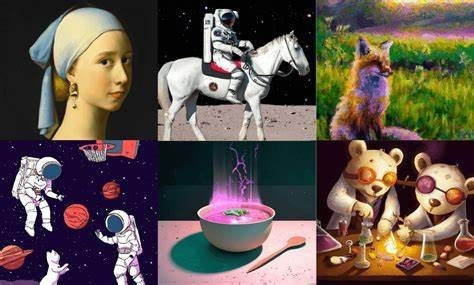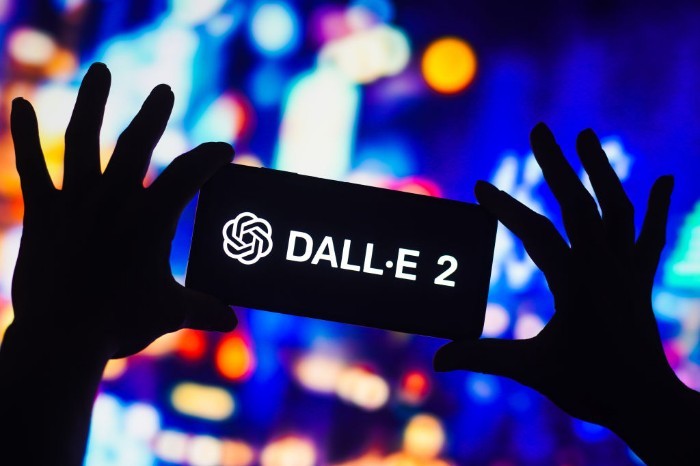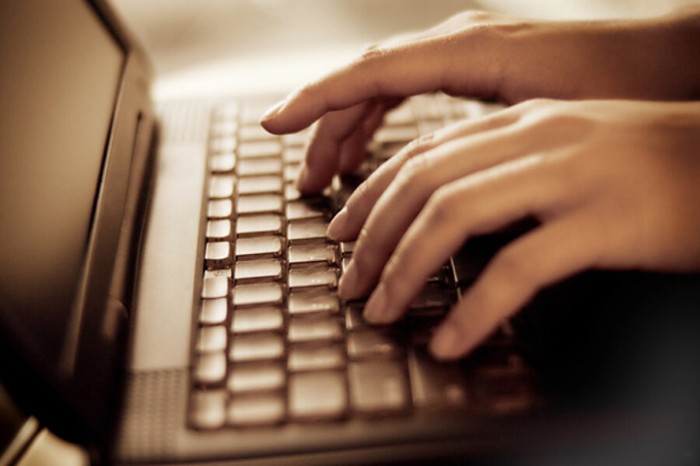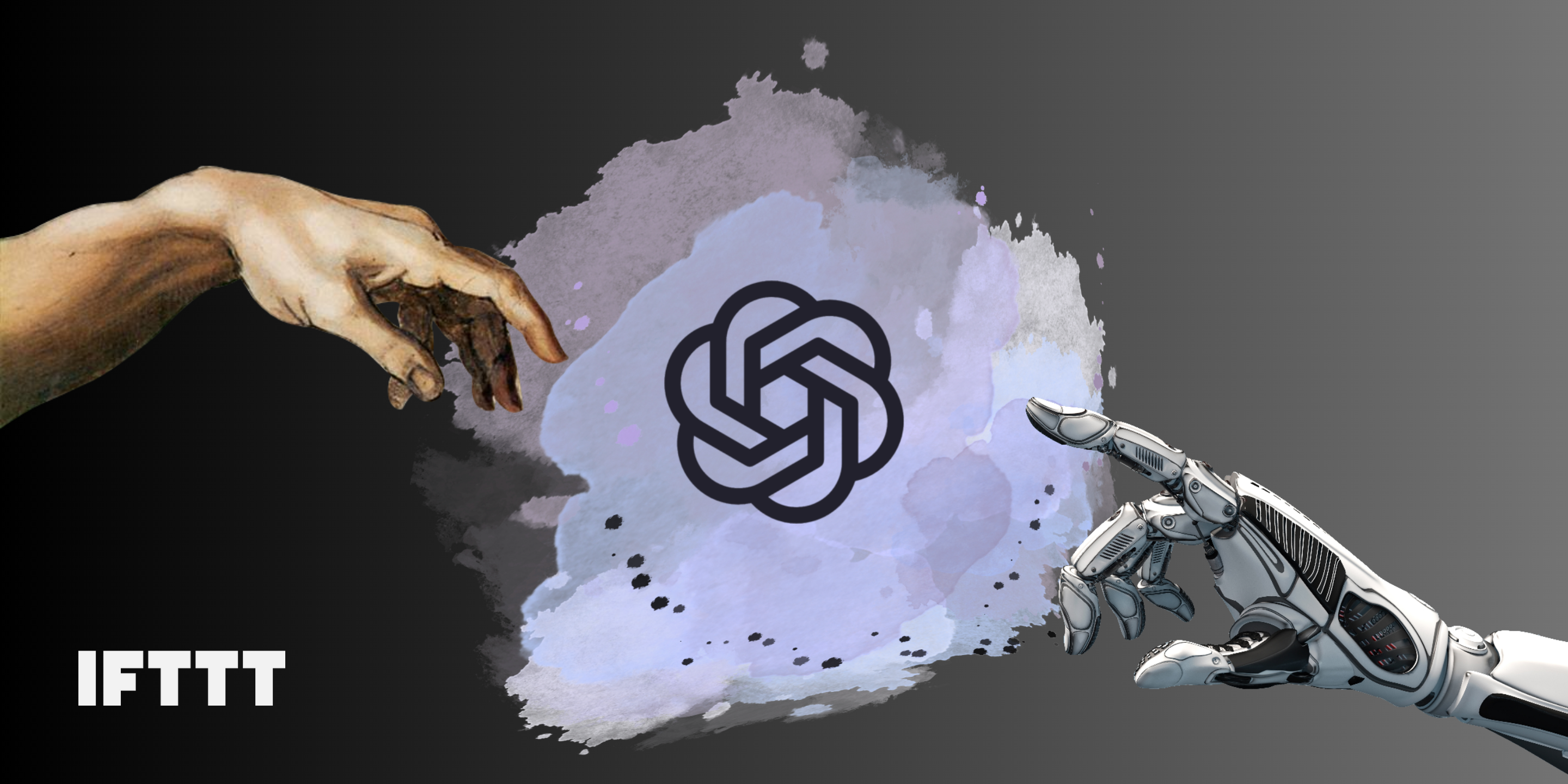From full-blown works of art to memes of Shrek on the Today Show, the AI software DALL-E is truly capable of creating an image out of whatever you throw at it. Developed by Elon Musk and Sam Altman's OpenAI, DALL-E utilizes text and image inputs to create unique outputs based on a deep neural network.
The original DALL-E was released in early 2021 and saw massive success as news of its capabilities was spread throughout the internet. In comparison to other AI image generators, DALL-E is a household name. In late 2022, DALL-E 2 was released as an API, meaning that programmers from across the world can use its technology to build their own inventions.
For users just looking to use DALL-E 2 to generate images based on a prompt, you can access the beta version through the original DALL-E website. In this blog post, we will walk you through the steps to create your own AI image using DALL-E 2, as well as some tips and tricks to master the program.
We will also introduce IFTTT's AI tools as an option for those who want further automated tools to supplement DALL-E 2. Even if you don't plan on using DALL-E 2 often, we are confident that our AI tools can help streamline many aspects of your business and personal life.
What is Open AI's DALL-E?

Open AI's DALL-E (which stands for "Drawing Attention to Language Models Enhanced") is an artificial intelligence system that can generate high-quality images from textual descriptions using machine learning algorithms. After its release, DALL-E revolutionized the world of AI and brought about more questions as to what is possible with this new technology.
DALL-E is built on top of the GPT-3 (Generative Pre-trained Transformer 3) language model, which means it can understand and interpret natural language prompts in order to create images instead of text responses. It works by analyzing the relationships between words and images in a massive dataset of images and text, allowing it to generate images that closely match textual descriptions.
DALL-E is capable of creating a wide variety of images, including objects, animals, scenes, and even abstract concepts. It can also combine multiple textual prompts to create complex images with multiple elements.
DALL-E has received a lot of attention for its impressive ability to generate highly detailed and accurate images from natural language prompts, all for a relatively cheap processing fee. Its potential applications are diverse, from graphic design to education to scientific research.
What's new with DALL-E 2?

DALL-E 2 is the latest version of OpenAI's DALL-E system, which was released in 2022 and represents a significant advancement over the original DALL-E.
Some of the key updates and features of DALL-E 2 include:
Improved image quality - DALL-E 2 can generate higher quality images compared to the original DALL-E due to improvements in the underlying machine learning algorithms.
Increased resolution - The program can generate images with a resolution of up to 1024 x 1024 pixels, which is significantly higher than the original DALL-E's 512 x 512 pixel limit.
Enhanced color control - Before, DALL-E would sometimes struggle with accurate color grading on certain images. DALL-E 2 allows users to specify precise colors for different parts of an image, making it easier to create more detailed and nuanced images.
Increased output diversity - DALL-E 2 can generate a wider range of images from a given textual prompt, resulting in more creative and diverse outputs.
Fine-grained control - Lastly, DALL-E 2 offers more control over the generation process, allowing users to adjust settings such as contrast, brightness, and saturation to achieve their desired output.
Overall, DALL-E 2 represents a significant improvement over the original DALL-E system and has the potential to revolutionize a wide range of industries, from graphic design to scientific research.
How to use DALL-E 2

Using DALL-E 2 to generate images from text descriptions involves a few steps, but it is incredibly simple to use once you get the gist. Here's a general overview of how to use DALL-E 2:
__Sign up for OpenAI's GPT-3 API __
DALL-E 2 is part of OpenAI's GPT-3 API, so you'll need to sign up for an API key to access it for use in personal software developments. Once you have your API key, you'll be able to use DALL-E 2 through the GPT-3 API.
If you simply want to create images using the software, go to DALL·E (openai.com), create an OpenAI account, and follow the below directions.
__Enter a textual description __
To generate an image using DALL-E 2, you'll need to provide a textual description of the image you want to create. This could be a simple description like "a red apple on a table" or a more complex prompt like "a unicorn flying over a rainbow with a castle in the background".
__Submit the prompt to the GPT-3 API __
Once you've entered your prompt, you'll need to submit it to the GPT-3 API for processing. The API will analyze the prompt and generate an image that matches the description as closely as possible.
__Review and adjust the output __
After the API generates an image, you'll be able to review it and make any necessary adjustments. If the output doesn't match your expectations, you can refine your prompt or adjust the parameters used by the GPT-3 API to generate the image.
__Download or share the image __
Once you're satisfied with the output, you can download the image and use it as desired. You can also share the image on social media or other platforms if you wish.
How to write prompts for DALL-E 2

Writing effective prompts for DALL-E 2 is a key skill to master and can help you get the most out of the software. Here are some tips and tricks for writing effective prompts:
Be specific - The more detailed your prompt, the better your chances of getting accurate images created. Include as many details as possible in your prompt to ensure that DALL-E 2 interprets it correctly.
Be concise - Avoid using too many words or sentences to describe your desired image. Try to be as concise as possible while still including all the necessary details.
Be creative - DALL-E 2 can generate a wide range of images, so don't be afraid to get creative with your prompts. Think outside the box and come up with interesting descriptions that will yield unique and unexpected results.
Be precise - Make sure to use precise language when describing the image you want to create. For example, using words like "roughly" or "approximately" can lead to ambiguous results.
DALL-E 2's advanced features: inpainting and outpainting

DALL-E 2 has two advanced image generation features that separate it from the original: inpainting and outpainting. Here's an explanation of each:
Inpainting with DALL-E 2
Inpainting is a technique that involves filling in missing or damaged portions of an existing image. Within DALL-E 2, inpainting allows users to edit or modify existing images by removing unwanted elements or adding new ones.
For example, if you have an image of a landscape with a tree in the foreground, but you want to remove the tree, you can use the inpainting feature to fill in the space where the tree was with a realistic background texture or scenery, making it look like the tree was never there.
Outpainting with DALL-E 2
Outpainting is a new feature introduced in DALL-E 2 that allows users to edit images that extend beyond the boundaries of the original image. This is particularly useful for creating seamless backgrounds or extending objects in a natural and realistic way.
For example, if you have an image of a bird perched on a branch, but you want to show more of the surrounding scenery, you can use the outpainting feature to extend the branch and background in a natural and believable way, resulting in a more compelling image with better composition.
More AI tools with IFTTT
Are you tired of spending countless hours performing repetitive tasks on your computer or mobile device? Do you wish there was a way to automate these tasks and free up your time for more important things? Let us introduce IFTTT's AI Tools.
What is IFTTT?
With IFTTT, you can create conditional statements or "Applets" that automate tasks between different web-based applications and services, all powered by AI technology. Whether it's backing up files to cloud storage, managing home automation devices, or monitoring weather and news alerts, IFTTT offers millions of user-created Applets for you to use.
The best part? IFTTT supports over 800 different services, including popular platforms like Twitter and Instagram. This means you can easily connect all your favorite apps and services to create customized workflows that meet your specific needs.
IFTTT AI Tools
At IFTTT, we have been developing our very own line of AI tools, to fulfill the ever-growing needs of busy entrepreneurs, businesses, and hobbyists alike. With our AI chatbot, you can easily create a custom tweets from your blog posts, or our blog post outliner will quickly generate a blog outline with any given topic. You can't forget our general idea chatbot, which will help you come up with new ideas for your projects, no matter how complex or simple the project is.
Our AI tools are unique for allowing another level of automation, by syncing apps together for a flawless creative process. Unlike others, our AI bots can be accessed on the homepage of your phone with the IFTTT widget, and responses can be auto-saved to your Google Drive or Dropbox accounts.
IFTTT's AI tools are a valuable resource for anyone looking to streamline their workday and automate repetitive tasks. So why wait? Sign up for IFTTT free today and start taking advantage of the power of AI to simplify your life.
Business
How to use DALL E 2 to create AI Images
August 25, 2023






